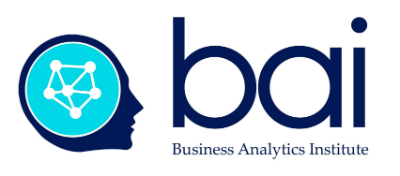Choices are easy when....
everyone does what they were supposed to do. Unfortunately most of the decisions we face each day address situations that don’t go exactly as planned….
Let’s assume its playoff time and the basketball arena is packed. Each of the two-hundred and fifty fans in section 22 has purchased an assigned seat near half court. However, one teenager decides two hours before tipoff to sit with his friends in the third row rather than his own seat courtside. The fans file in after that attempting to sit in their own seat, but taking a random seat in the section if theirs is already taken. You worked late and unfortunately arrive just after the start of the game to find only one available seat left — the number is hidden by the crowd. What is the risk that by choosing to sit in this last available seat you will in fact be choosing one that you didn't purchase?
Management isn’t about telling people what to do, but helping others make the best possible choices. Human decision-making is more often than not hindered by perceptions of risk, uncertainty, and ambiguity than the lack of data. In everyday life, risk is associated with avoiding “poor” choices our objective view of the situation. Frank H. Knight, a traditional authority on risk, spoke of situations in which the classification of events and alternatives are both objective and knowable. The fact that risk can be qualified as “objective” assumes that the decision-maker understands the nature of the problem he or she is facing.
If the notion of risk assumes that the decision maker perceives clear choices, uncertainty corresponds to situations in which the choices are unclear and/or their consequences difficult to measure. Two people might have different probabilistic beliefs over a given event, if one cannot convince the other of the error of his ways, uncertainty arises from “the impossibility of exhaustive classification of states”. Similarly, any attempt to use current events used to predict the future is largely based on judgement and intuition — and thus by definition subjective. The decision-maker is faced with subjective probabilities precisely because the future is unknown — not only do we not know the probability of certain events we cannot reasonably predict the range of potential events.
Ambiguity arises from the perceived lack of explicit context. Ambiguous decisions are the ones for which the decision maker does not have sufficient information to be certain that his or her gut feelings are correct. Ambiguity refers to both the decision-maker’s beliefs about what he or she perceives and his or her attitude towards risk. Situations are never ambiguous, but our perceptions of situations can be. Ambiguity is thus open to more than one interpretation: it is an attribute of people’s preferences and behavior rather than the context itself. If we improve the process in which we take decisions, we reduce our perceptions of ambiguity.
Management is about taking better decisions, both your own and those around you. Improving decision-making requires dealing with the sources of poor judgement: risk, uncertainty and ambiguity. In addressing risk, we need to identify verifiable data on the projected costs and benefits of a problem or opportunity. In dealing with uncertainty in analyzing complex problems, we need to understand the fundamentals of probability to make the better choice. To reduce ambiguity, we need to understand the quality of the data at hand, the nature of the problems we’re facing, and which methodologies will produce the best results. Management challenges today have less to do with the quantity of data and software at our disposal than our capacity to improve the mental processes behind decision-making.
Should you be overly concerned about the risk of arriving late for the basketball match and not finding your assigned seat? This problem is analogous to the airplane probability problem presented by Brett Berry in a recent post.[i] In analyzing the data you have at your disposal, and the nature of the problem, there is a 50% chance of your seat being taken whether you arrive an hour before the match or a few moments late. If the seats were chosen by the fans at random, you would have a 1/250 chance of getting your own seat. This isn’t however the case here, for the fans are choosing a seat at random only if their own seat has already been taken. This means that it is probable that half of the scenarios will sort themselves out (a fan, not having found his or her own seat, will choose the teenager’s courtside seat), while half will end up in someone else’s place. The probability is fifty percent that you will find your assigned seat no matter when you arrive in the arena.
Improving managerial decision-making is at the heart and soul of the Business Analytics Institute. In our Summer School in Bayonne, as well as in our Master Classesin Europe, we put analytics to work for you and for your organization. The Institute focused on five applications of data science for managers: working in the digital age, data-driven decision making, machine learning, community management, and visual communications. Developing your ability to take better decisions can make difference in your future work and career.
Lee Schlenker is a Professor at ESC Pau, and a Principal in the Business Analytics Institute http://baieurope.com. His LinkedIn profile can be viewed at www.linkedin.com/in/leeschlenker. You can follow us on Twitter at https://twitter.com/DSign4Analytics
[i] Berry, B., (2017). The Airplane Probability Problem, Medium.com,https://medium.com/i-math/solving-an-advanced-probability-problem-with-virtually-no-math-5750707885f1


